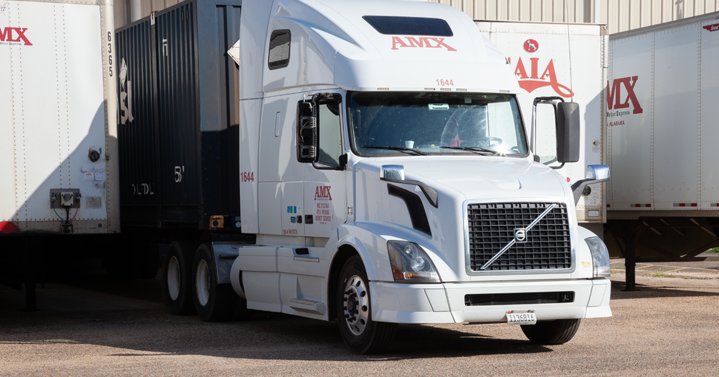With the continuing pressures of a recovering supply chain network and ongoing volatility in multiple markets and industries, the demand for reliable shipping services at fair freight rates remains high. Today, the bulk of goods shipped across the country is classified as dry van freight and transported in non-refrigerated trailers.
The current state of the economy and the supply chain, in general, puts dry freight transportation high on the list of services driving forward growth and recovery today. Fleet Owners’ early 2022 review noted that “because of capacity and productivity challenges in the spot market, rates have been outperforming volume…. total truckload rates were about 19% higher in 2021 than in 2020, while spot rates were up about 29%, and contract rates up about 14%. Seasonally adjusted rates for those three segments are well ahead of rates in 2017 and early 2018.” Keeping up with dry van rates is vital for shippers and carriers who want to maximize capacity and maintain high-profit levels with driving jobs.
What is Dry Van Freight Transportation?
To understand what factors can impact dry van rates, one must understand what dry freight and dry van transport entail. A dry van essentially is a semi-trailer that’s fully enclosed to protect cargo from the elements. These trailers are versatile and can carry palletized, boxed, or loose freight. They are very adaptable but limit what they can safely and securely take.
They are not climate-controlled like reefer trucks and are constrained to their set size. Many industries use dry van trucking services, and the most commonly shipped cargo is non-perishable goods. Transporting dry van freight is easier for many applications as it is the most common type of trailer found, and it’s possible to ship most goods without any specialized care and handling needs.
Factors That Can Impact Dry Van Rates
Dry van transport rates vary based on several factors, just like all other shipping options and specialized transportation services. These ever-changing rates and factors lend to the somewhat volatile nature of freight pricing and rate management. This nearly endless demand makes dry van freight a go-to option for shippers and carriers looking to secure capacity and manage loads, especially during slower driving seasons when other load types might be less accessible. Keeping dry van rates manageable and keeping dry van freight services in mind can help shippers maintain a competitive advantage. The following ten factors can directly and, at times, significantly impact the going market rates for dry van hauling services.
1. Delivery Location and Distance
The location and distance to deliver the freight directly impact dry van rates. The farther the destination and the more miles driven, the more likely the load cost will increase. However, milage alone is not the only influencer to consider. Dry van shipping costs are also highly dependent on pick-up and delivery location and capacity status. Commercial companies predominantly use dry van freight. So, suppose a load requires special delivery or handling, such as delivery to non-commercial or limited-access areas. Delivery fees will likely be higher due to that added work.
2. Capacity and Demand
Capacity and load transport availability are huge dry van freight puzzle pieces. Capacity refers to the number of trucks available to haul loads, whether across town, the state, or the country. A sudden or prolonged shortage of drivers or trailers will affect capacity and drive demand. Suppose capacity cannot keep pace with increasing customer demands. In that case, the rates associated with dry van transportation will increase to offset rising prices and ensure shippers maintain a healthy profit margin.
3. Freight Class
Dry van rates can also shift significantly based on the freight type and assigned class ranking. Shipments with special handling needs, custom packaging, or particular delivery instructions are much more time-consuming to handle. This reduces how many loads a shipper can carry in a specified time. Accessorial charges are often applied to cargo based on the freight class listing. The higher the class rating, the more complicated the load is to manage, and the more expensive the dry van freight costs for trucking companies to haul.
4. Rising Fuel Costs
When transporting dry freight of any kind, moving the trailer from Point A to Point B takes fuel. As conflicts in oil-rich counties, weather disruptions, and other issues push fuel prices higher, shipping costs too. Fuel rates can also vary from state to state, so it is easy to see where dry van freight costs rise significantly and often. Planning and monitoring current rates and trends for fuel costs can help truck drivers offset spikes without passing it all on to the customer.
5. Unexpected Disruptions
As part of the supply chain network of transportation services, dry van freight can easily fall prey to supply chain disruptions. Unforeseen events often occur without any advanced warning. Roadwork and weather events cause longer drive times and massive delays. And issues with vehicles or equipment lead to supply chain bottlenecks, backlogs, and long wait lines. Unfortunately, dry van rates increase sometimes due to these events, so additional upcharges are often applied to shipments to cover these potential surcharges and added expenses.
6. Right Carrier Services
Though multiple factors affect dry van rates, shippers can use sound risk mitigation strategies to negate those influences. Finding a suitable carrier means easily matching loads to skilled and experienced drivers who know how to handle your load—their having access to tools and supply chain experts significantly reduces the risk of losses, damages, and disruptions. This keeps expenses low for carriers, and those savings trickle down to the customer with lower rates and more reliable transportation options.
7. Driver Shortage Concerns
The industry-wide driver shortage also impacts dry van freight transportation services. Dry van rates have reached new highs in many areas with fewer drivers overall and even fewer available for urgent and rush dry haul orders. Retaining driver contracts and enticing new drivers to come on board must be a key priority for management. The shortage is likely to continue and coupled with increasing pressure to raise driver wages and improve workplace conditions, and talented drivers will be more valuable than ever.
8. Backhaul Availability
Backhaul loading makes up a large part of freight and shipping logistics and is something management needs to plan when looking at rate factors. This is essentially the return of a shipping truck or trailer from its original destination to its original point of departure. Using these return trips to their fullest, with a full load, partial truckload, or less than a truckload, can maximize profits and avoid empty miles and wasted fuel. Dry van freight and trucking companies rely on backhaul load productivity to keep rates as low as possible.
9. Equipment Needs
Sometimes the determining factor for how much a particular dry van freight load ends up costing comes down to the equipment required. Heavy items or hazardous materials may require special loading procedures or equipment to get the cargo on and off the truck safely. Sometimes carriers will need special permits or training to handle some loads. These extra services that go above and beyond basic loading and transporting can cause dry van rates to increase load-by-load and must be considered in this logistics digitalization age.
10. Technology Automation
It is challenging to keep up with every trend and shift consumer whim in the best times. But for logistics managers and shippers, this is a necessity. Working with real-time data, freight analytics, and automated processes makes choosing a suitable carrier more streamlined. With a freight shipping marketplace backed by the latest supply chain technology and automation, dry van freight transporters can get an overview of the market with key insights. With the help of 3PL technology and a tech stack, dry van transportation services can improve.
Get the Best Rates With a Hybrid Dry Van Broker and a Partnership With AMX Logistics
They are capitalizing on the growing need and demand for dry van freight transportation services. Make it easier to keep up with dry van rates and learn even more tips and tricks for improving services while keeping expenses low and profits high. A bright future of continued success and growth is possible by partnering with dry van hybrid brokers and shipping experts. Contact AMX Logistics today to learn more.


